
By Angelo Randaci, Earth’s Ally Horticulturist
Angelo’s passion for plants has led him to explore many areas of horticulture including research, grounds management, technical training, design and nursery management.
Our gardens inspire us. They create harmony, pleasure, and serenity. As stewards and guardians dedicated to making the most of our patch of land, we should include landscaping in a way that preserves the beauty of our garden while conserving our most precious and necessary gift: water. The Environmental Protection Agency (EPA) states that of the estimated 29 billion gallons of water used, nearly 9 billion gallons, or 30%, is devoted to outdoor use. The EPA also states that during summer months or dry climates, a household’s water use can be as high as 70%. There are a number of different strategies we can employ to promote water conservation in our gardens starting with an understanding of your soil type.
Know Your Garden’s Soil Type for Water Conservation
1: Know your soil type to determine your watering needs. A coarse, sandy soil, for instance, will absorb water very quickly while a soil containing silt and clay will absorb water at a much lower rate. Sandy soil will also retain the least amount of water, whereas soil containing clay and loam will retain more water.
2: Have your soil tested. The most accurate test is obtained from your local Cooperative Extension office or another soil lab. This test will supply important information that will help you determine watering needs by telling you what type of soil you have as well as pH, nutrient levels, and organic matter content in your garden. If needed, you can amend the soil for maximum water and nutrient absorption.
When and How to Water Your Garden
3: Watering in the morning is often recommended, but most water is conserved under cool, shady conditions in high humidity and low wind.
4: Apply water where your plant will benefit most, at the root zone. There is no need to water leaves. Keeping water off of the leaves will help prevent some fungal diseases while conserving water.
5: Use a trigger hose nozzle to control watering. You can regulate the flow of water by squeezing the trigger on the handle and turning the hose on and off as needed to conserve water. Nozzles that stop the water flow as you move from one location to the next will reduce water waste.
6: When using an irrigation system, utilize one that delivers water directly to plant roots. Set sprinklers so water does not cover sidewalks, buildings, paths, patios, or anywhere other than your plants. Regularly check for leaks and clogged or broken sprinkler heads.
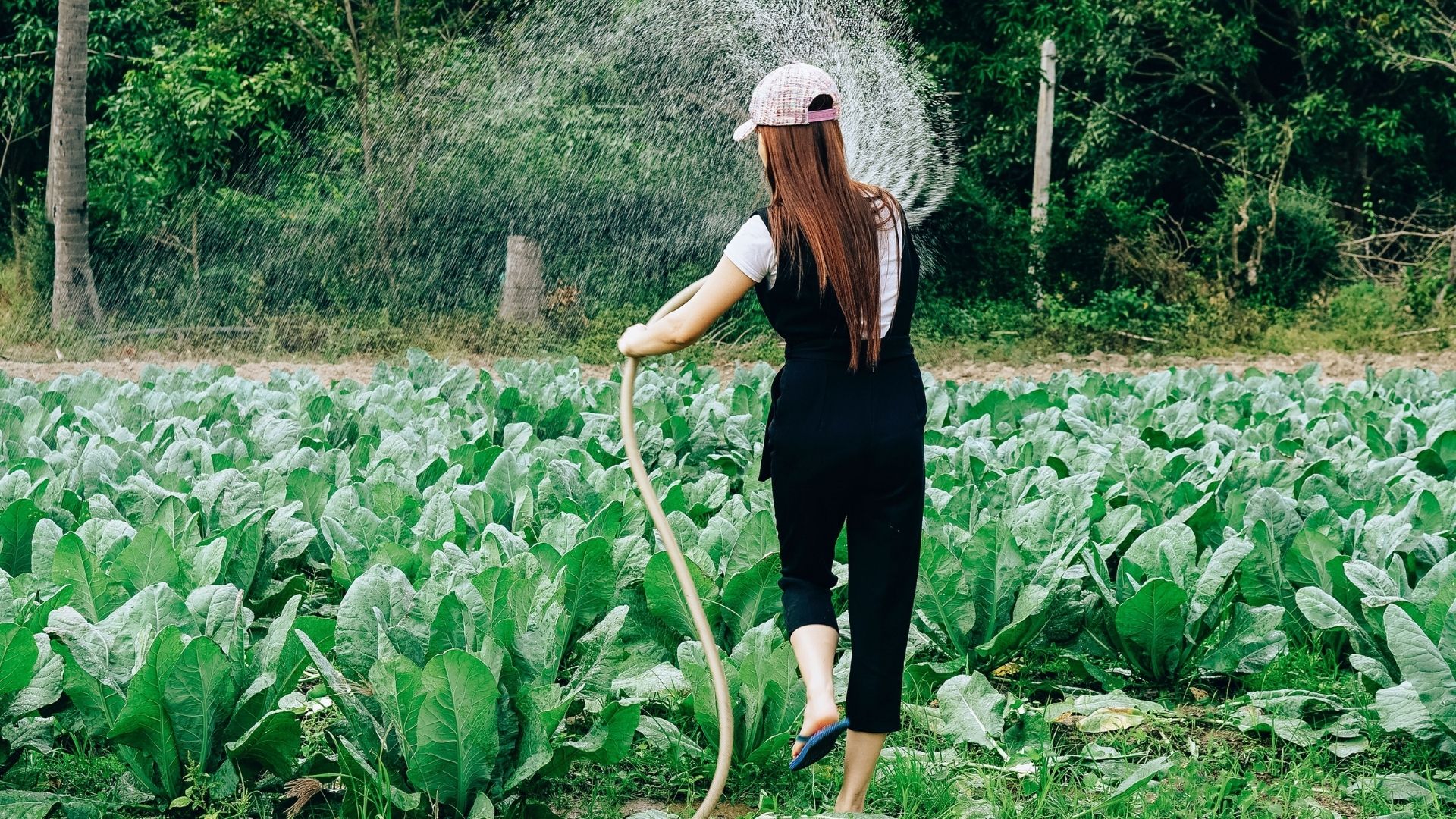
7: Do not water on windy days, which will waste water through excessive evaporation.
8: Drip irrigation is the most water-efficient irrigation system delivering up to 90% water use efficiency over other sprinkler systems. Drip irrigation is a type of micro-irrigation that delivers water slowly to the roots of plants minimizing runoff and evaporation.
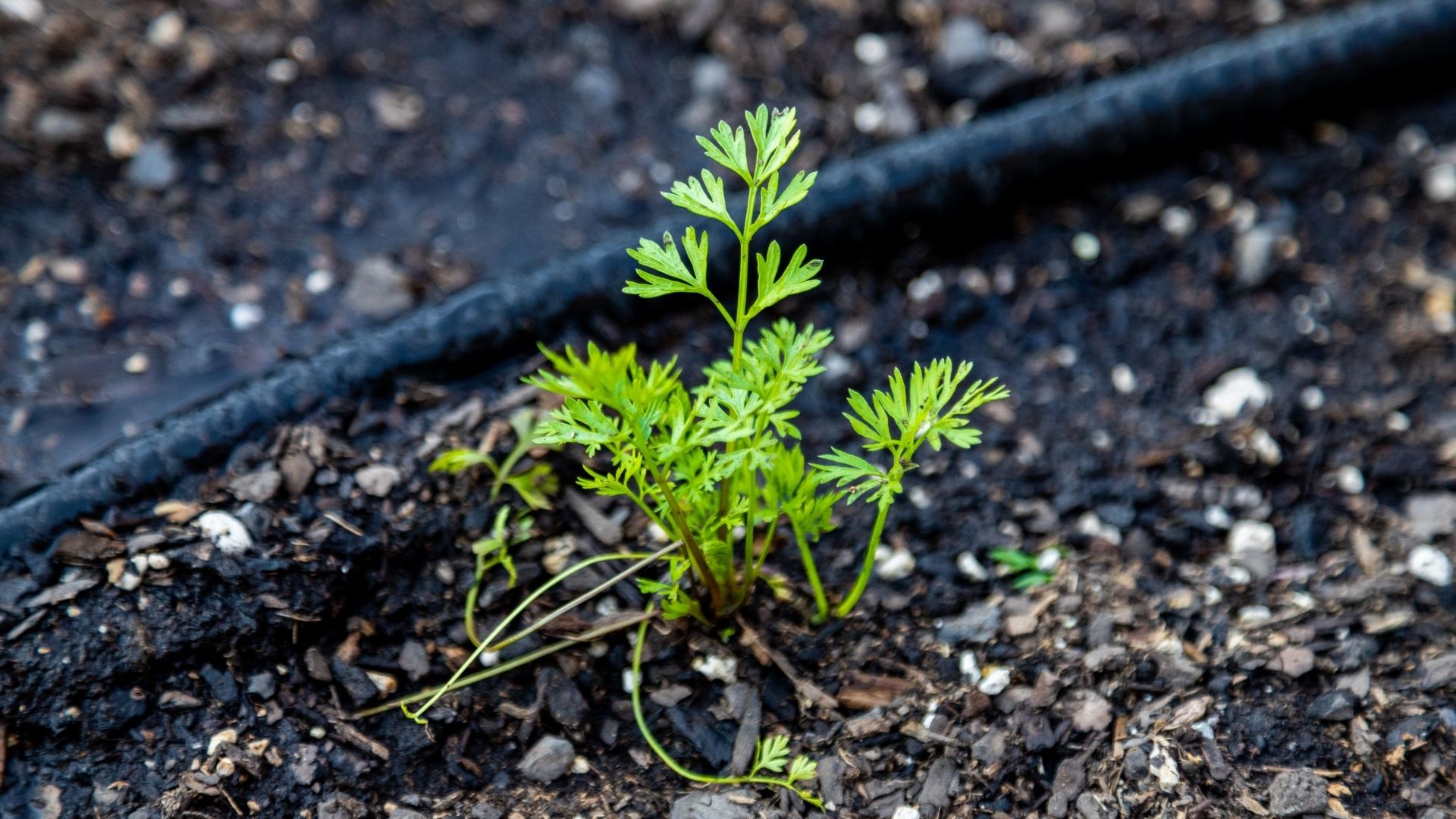
9: Learn how much water your irrigation system uses to determine how long it should run. You can determine water use by recording the numbers from your water meter before and after running your irrigation for 10 minutes. That will tell you the gallons used for 10 minutes. Then divide the number by 10. This will give you the gallons of water used per minute.
10: Purchase a rain gauge. An inexpensive rain gauge will determine how much water you actually apply to your plants. Additionally, a rain gauge will also tell you how much water is added to the soil via rain events. If you get an inch or so of water a week, which is the average amount needed for garden soil, you may not need to supplement watering depending on your soil type.
11: Check your watering depth. Dig a small hole to the depth of your plant’s roots after watering to make sure water has reached the plant roots.
12: Time your watering periods. Purchase an automatic shutoff device to control how much water you add or set the timer on your cell phone. This will save on your water bill especially if you forget to turn your system off.
13: When watering slopes, run water for a short time and let the ground absorb the water before watering again to avoid runoff.
14: Use tree water bags or rings around newly planted trees and shrubs. Simply place the ring around your tree and fill it with water. The tree rings will provide continuous drip irrigation at the root zone. No water is wasted. They are also very useful to hydrate your trees during drought periods.
15: Explore DIY drip watering. You can make your own drip watering container by poking small holes in the bottom of a water jug. Simply heat a nail or other small sharp object to make a few holes. Fill it with water and place it next to your plant. Use a few jugs for larger plants, and smaller bottles for smaller plants.
16: Dig a water-catching basin around plants to capture water. This will funnel both irrigation and rainwater to the roots and keep water from running off into the surrounding soil. This is especially useful for plants that have been recently planted or have higher water needs.
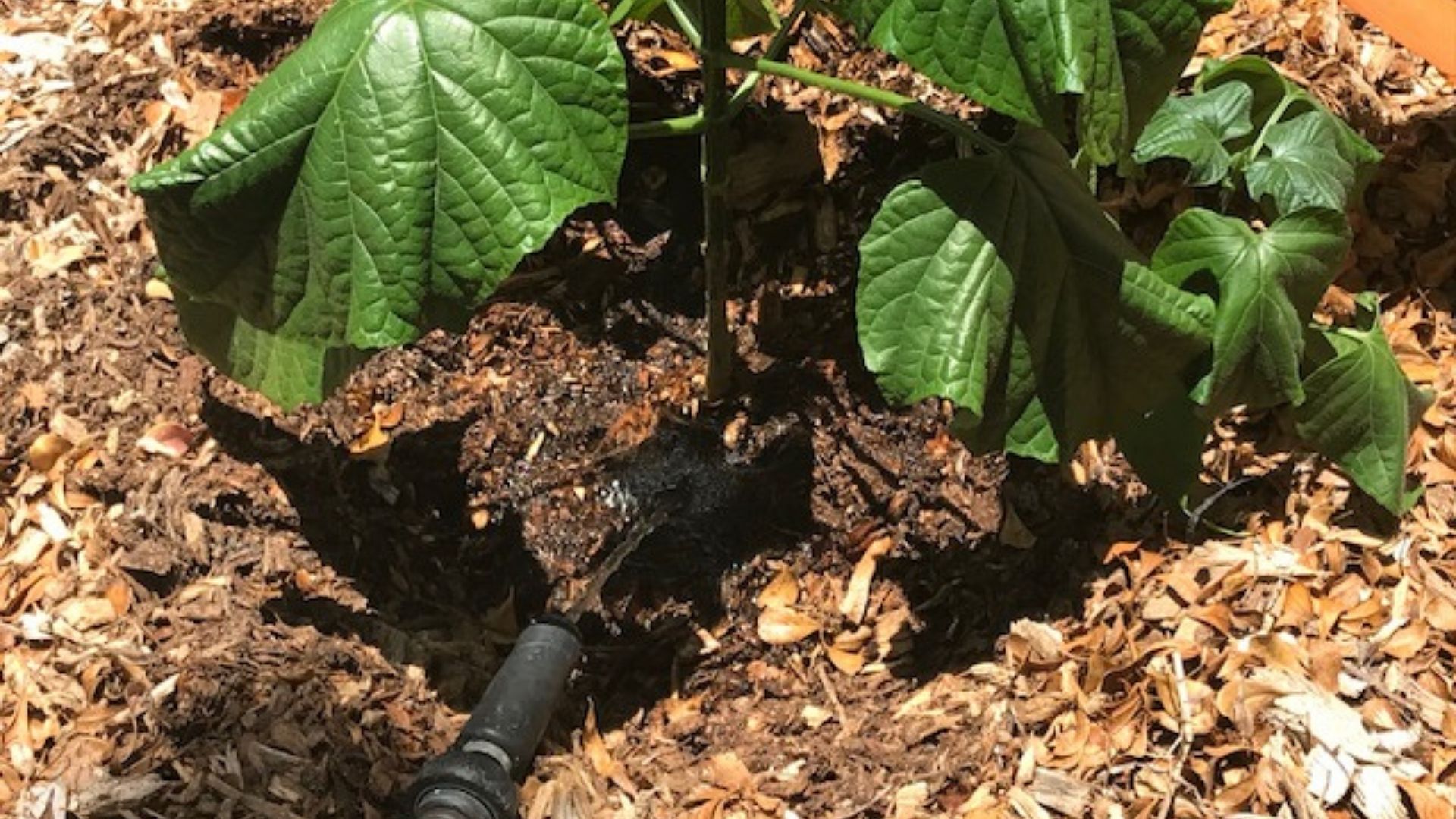
17: Avoid standing water. Well-drained soils are best for most plants. This means soil that allows water to percolate through it without pooling. You can test your drainage by digging a hole 12” x 12” wide and 12-18” deep. Fill it with water once, let it drain, and fill it again. Time how long it takes to drain the second time. Your soil is well drained if your water level drains at the rate of 1” per hour. If your hole drains slower, you will need to provide drainage by amending the soil. Faster draining indicates dryer conditions that might need water more often.
18: Don’t overwater. Besides wasting water, applying too much water will saturate the soil displacing air within the soil structure, and depleting oxygen needed for root growth. This will suffocate roots and may cause root rots and other fungal diseases.
19: Mulch your plants to conserve moisture in the soil, keep roots cool, and help keep weeds from germinating. Create a water reservoir by building up the soil around the plant at the edge of the root ball. Add mulch along the outer edge of the root ball.
Mulch provides these additional benefits:
- Prevents runoff in heavy clay soils or along slopes
- Controls weed growth
- Insulates soil against extreme summer and winter soil temperatures
- Reduces soil compaction
- Improves the health of soil and water holding capacity;
If you add mulch to your garden, you want it to be approximately 3” deep but pull it away from the plant stems. Make sure to review each plant’s water needs before applying mulch. Some plants, such as citrus trees, generally prefer less water and are prone to root rot if mulch is applied to them.
Related: Mulch Much? 5 Reasons You Should Start
20: Plant in containers. Glazed terra cotta pots are generally considered the best for potted plants because the terra cotta helps prevent water retention. You can also add mulch to the soil surface of container plants.
21: Use rain barrels to capture rainwater from your roof to water plants. You can also collect rainwater in pails or anything that will hold rainwater to water plants.
22: Reuse grey water. Grey water is any wastewater from your house that is not considered sewage. Use grey water-compatible household products that are plant-based if you plan on recycling your water. Avoid products that contain sodium or sodium compounds, bleach, and boron. These create an alkaline soil condition unhealthy for plants. Do not apply grey water directly to plants.
23: Collect warm-up water. This is the water that goes down the drain while you are waiting for the water to warm up, such as in your shower, tub, or sink. Put a container under the faucet to collect this water, allow it to cool, then water plants.
24: Save kitchen or reserve water from cooking activities such as steaming vegetables or cooking pasta. Make sure to allow your water to cool before applying to plants. Don’t use water that’s been used with meat or dairy.
25: Plant the right plant in the right place. Plan your current and future planting designs to conserve water. Do this by grouping plants with similar watering requirements together. Plant drought-tolerant plants where ever you have elevated dry or windy spots or any other hot, dry, exposed area. Place plants with high water needs where they will provide high visual impact and near a water source for easy access.
Related: Right Plant, Right Place
26: Know your USDA hardiness zone. This will help you select the best plants for your zone.
27: Incorporate native plants into your design. Replace any plants that are growing poorly with plants indigenous to your region. They will tolerate your garden conditions better, use less water, and are usually less susceptible to pests and adverse weather conditions. They will also attract pollinators, providing them with food and cover.
28: Plant your vegetable garden in blocks or raised beds instead of in-ground rows. Plants in blocks are situated closer together than in rows allowing for a higher density planting and easier maintenance. This also helps to shade the soil, reduce weeds, and conserve water in the soil.
Related: Rise Above Challenges with Raised Garden Beds
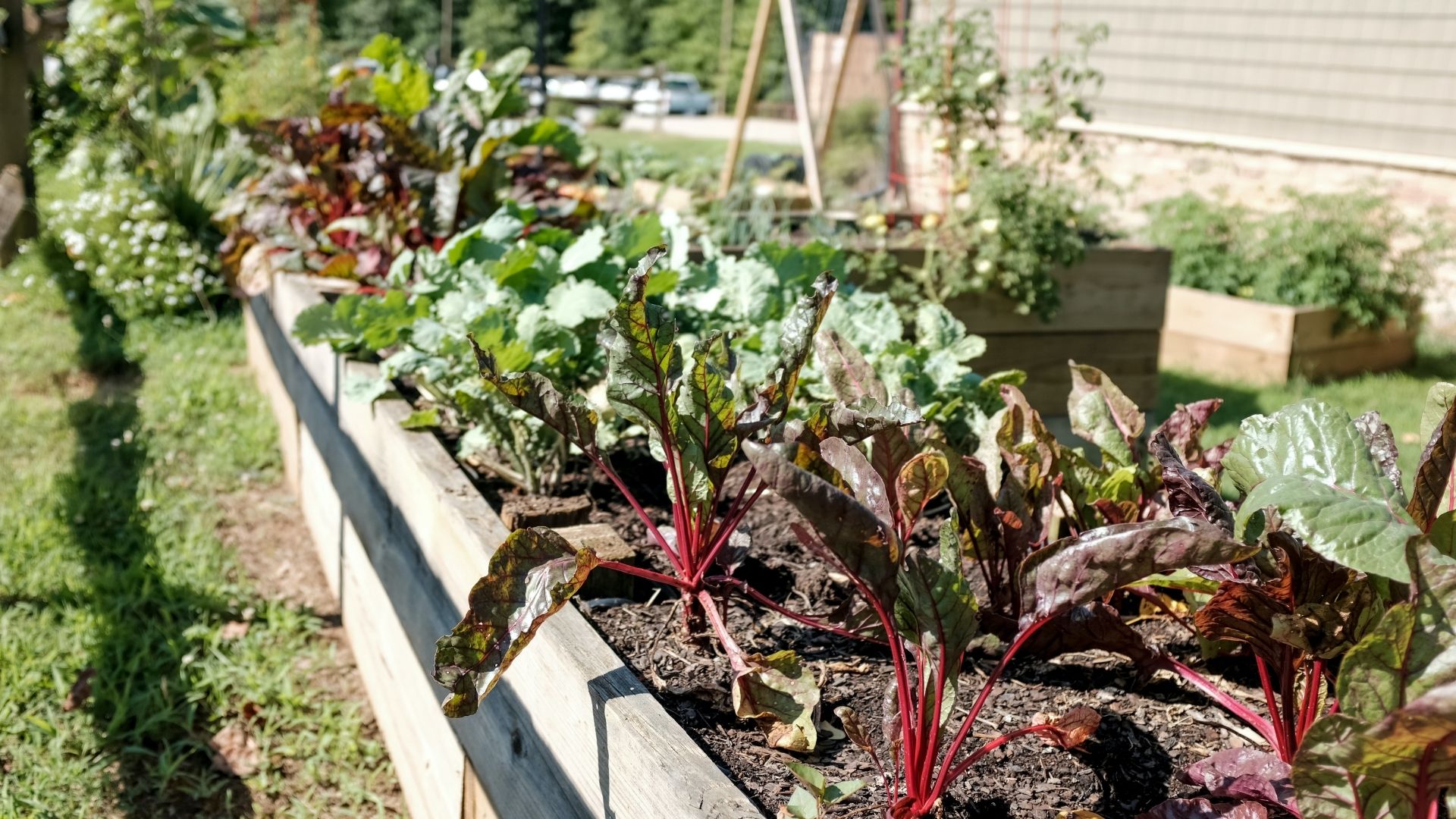
29: Use porous landscape materials for patios and pathways, such as stones, bricks, mulch, and pavers. They reduce the volume of water and help reduce runoff, flooding, and pollution by slowly releasing water into the ground. Rather than hosing down walkways, driveways, and patios, purchase a good broom to sweep away dirt and debris.

Reduce Your Lawn Areas to Promote Water Conservation
30: Choose low-maintenance, drought-tolerant grass species for your area or reduce lawn area by considering lawn alternatives. This could include opting for decorative rocks and gravel, or mulch to reduce lawn areas. Turn areas of lawn into wildflower meadows or utilize low-maintenance groundcovers.
Related: Beauty and the Blemish: 5 Organic Lawn Alternatives
31: Add clover and other wildflower seeds to your lawn to provide nectar for pollinators while adding color. Clover also converts nitrogen from the air into ammonium which is taken up by the grass to provide nitrogen to help your grass stay green.
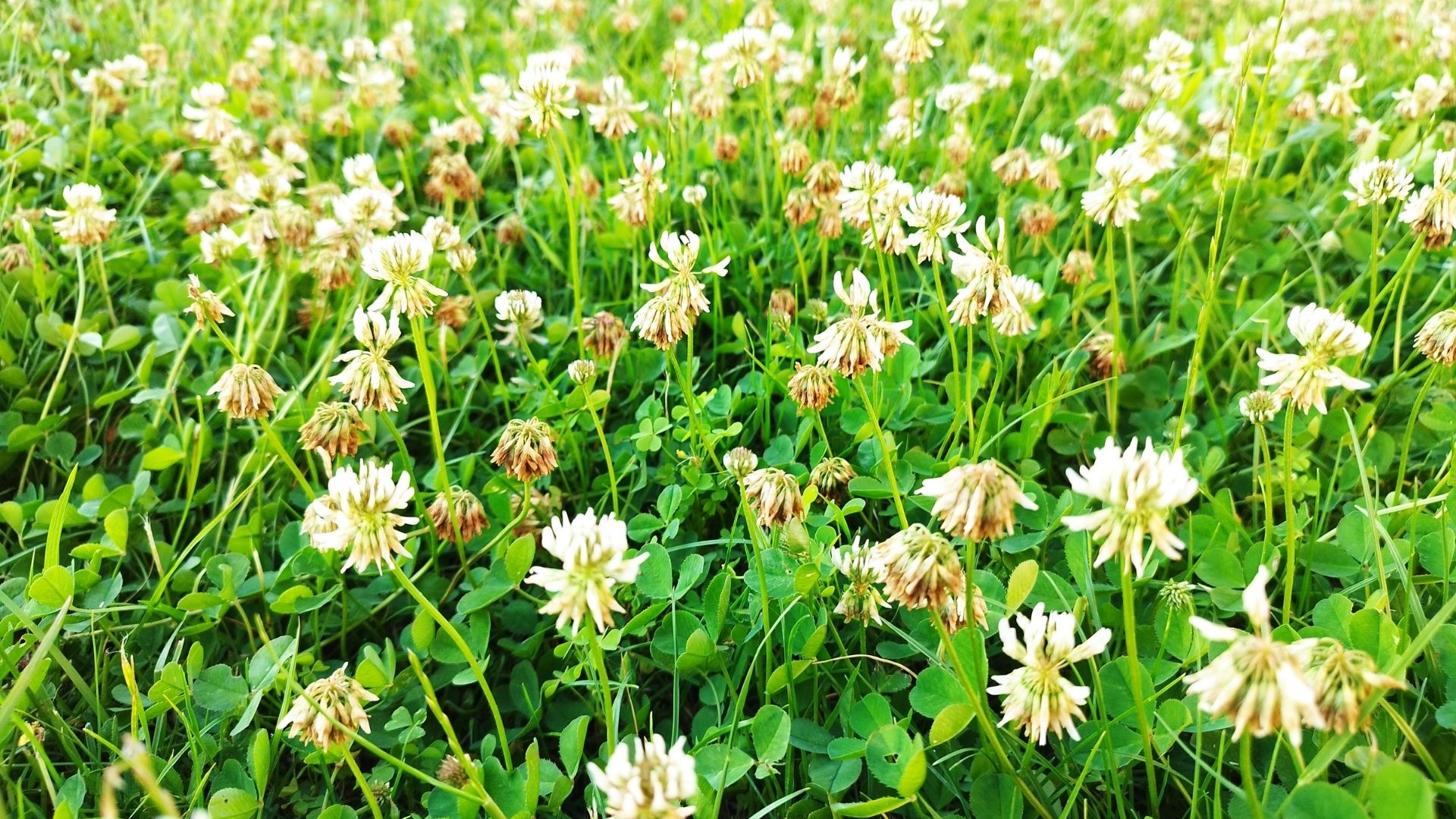
32: Expand your outdoor living area by adding decks or patios.
We’d love to hear how Earth’s Ally is helping you grow healthy gardens. Share your experience with our eco-friendly concentrates and stay connected with the #EarthsAlly community on Facebook, Instagram, and Twitter for access to our latest blog posts, giveaways, and exclusive promotions.
